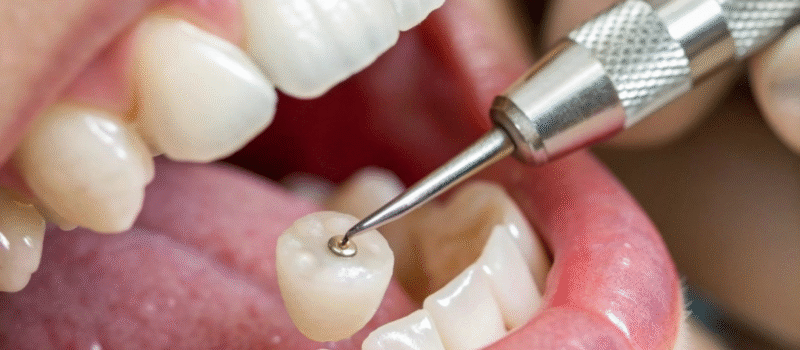Most people know about dental fillings. They are the usual treatment for light tooth decay and cavities. However, in cases where the damage is beyond the capabilities of a filling, the dentist offers a more advanced solution. This is where crowns and bridges for teeth come in as the silent heroes of plumbing the dental restoration back to life, not just as aesthetic treatments.
Even though these treatments are not new, they have undergone great changes thanks to modern techniques and materials. They are now a key component in the process of restoring attractive and functional smiles.
The Problem with Relying Only on Fillings
Fillings can be used to treat tiny areas of decay, but in case of great damage, cracks, or root canal, the tooth significantly loses its strength. Trying to fix it with a filling will not bring back its full strength and might even make it more vulnerable to harm.
When teeth are missing, fillings are obviously not a choice. Left gaps can sooner or later affect speech, chewing, and the position of adjacent teeth. For this very reason, a more broad, supportive approach that keeps the whole bite’s structure and function is needed.
How Crowns and Bridges Support Your Smile
A crown acts as a protective cap over a damaged tooth and therefore it resize, restructures, and recreates the damaged tooth’s appearance. It also safeguards the tooth from any further damage or loss by allowing the tooth to once again endure the normal biting and chewing forces of the mouth.
Bridges come into play when one or more teeth are missing. They are placed by attaching a prosthetic tooth to the adjacent healthy teeth or dental implants, thus effectively “bridging the gap.” This results in restored chewing comfort, prevention of shifting in other teeth, and support in maintaining the arch.
The combination of these treatments goes far beyond mere repairs. They raise your self-esteem, keep the natural balance of your bite, and promote overall oral health.
The Process and Longevity
Obtaining a crown or bridge is a typically lengthy procedure where the dentist does the impressions and then fits a temporary repair after the tooth or the adjacent area has been prepared. In a subsequent visit, the final crown or bridge is made specifically for your mouth through a production process. With appropriate care and regular check-ups, these restorations can last over ten years.
Still, daily brushing and flossing along with regular dental checkups are very important. The materials used are very strong, but the longterm success of the treatment is still very much reliant on the condition of the adjacent teeth and gums.
Quality and Expertise Make the Difference
The materialsceramic, porcelain, zircon, or metal alloysmarkedly influence the aesthetic and functional life of the end product. But even the best quality materials can fall short without professional positioning. This makes picking the right dental team all the more important.
At Lethbridge Dental, the whole restoration process is carried out with anthropocentric care and the utmost care taken in every detail. The goal is to provide comfort, durability, and beauty for long-lasting results, no matter if a full bridge is being made or just a single crown.
The Role of Restorative Dentistry Today
Over the years, dentistry has advanced through the shift of focus from temporary solutions to longterm oral health protection and conservation methods. In the present time, crowns and bridges for teeth, which are dental procedures, are recognized as the basementbasically the supports for the entire mouth structure, not merely fixing the problem. They do not only repair what is broken but also strengthen the bite, protect from future problems, and provide longlasting selfconfidence.
Final Thoughts
Restorative dentistry comprehends more than mere filling of cavities. The entire scenario of oral health should be understood, i.e., how one’s smile impacts daily life, and the mutual supporting role between teeth. When fillings fail to help, crowns and bridges become the next step of care.
If there is damage, pain, or tooth loss, it might be the right time to consider more complicated solutions. By talking to your dentist, you can find out if the traditional restorations are indeed the best way to rebuild your smilestronger than ever.



